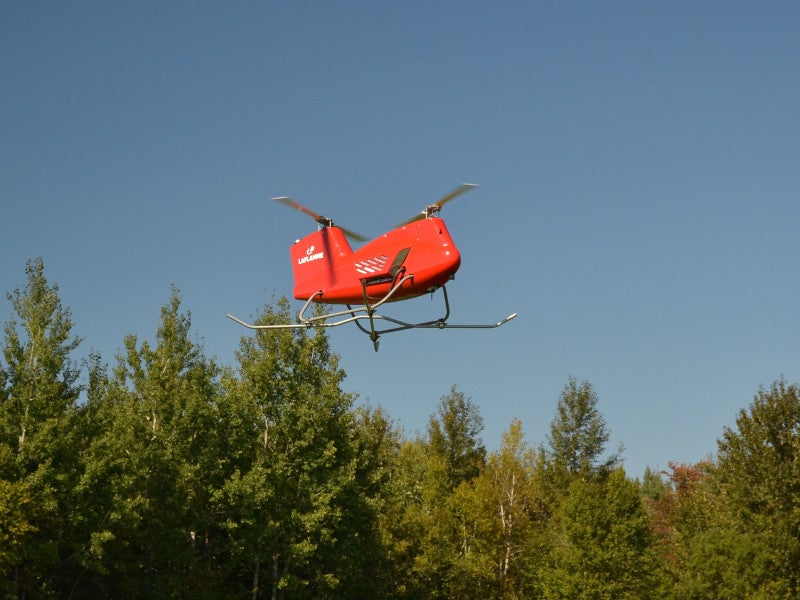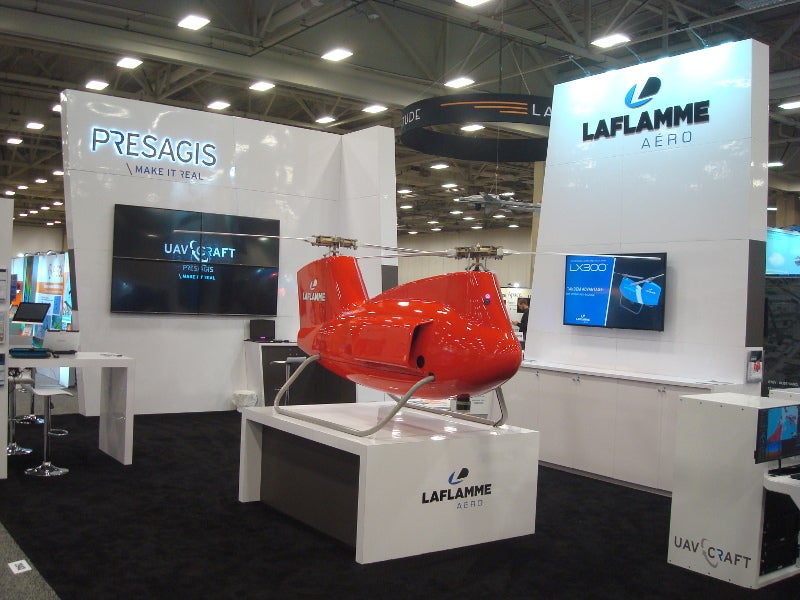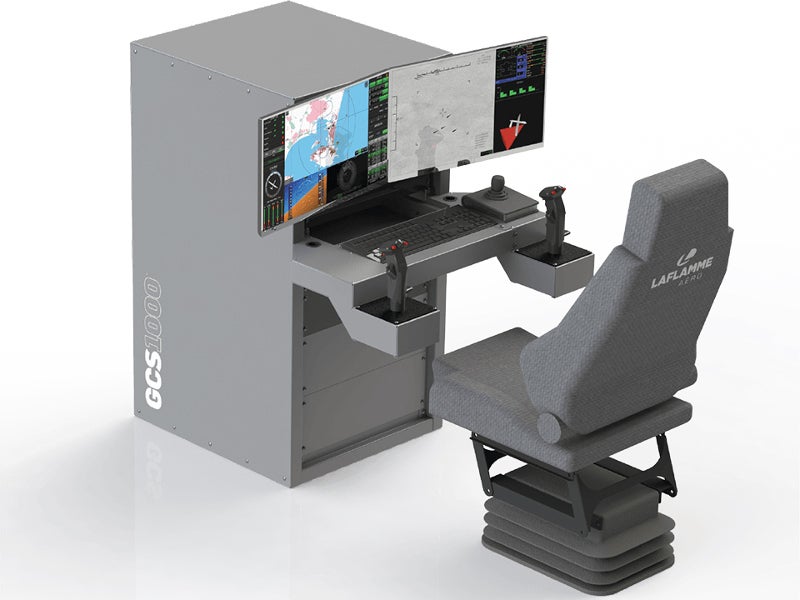LX300 is an unmanned helicopter designed and manufactured by Canadian firm Laflamme Aero.
The rotary wing aircraft, which offers vertical take-off and landing (VTOL) capability, is intended to replace manned naval helicopter operations in challenging conditions.
LX300 unmanned helicopter was unveiled at the AUVSI Xponential 2019 exhibition held in Chicago, US, in May 2019.
Missions that can be performed by the helicopter include search-and-rescue, damage assessment inspection, law enforcement, aerial survey, communication relay, and first-responder assistance.
The helicopter can be reconfigured into four variants to suit the mission requirements of multiple industries including agriculture, mines and energy, emergency medical services, and defence.
LX300 unmanned helicopter design and features
Designed to offer unprecedented levels of performance in harsh environmental conditions, the UAV is constructed using state-of-the-art manufacturing techniques. It is built in accordance with the standards of a manned helicopter.
The robust airframe of the unmanned helicopter is reinforced with the usage of composite materials in its construction. The rotor blades are also made of composite materials to withstand heavy winds.
The forward and rear ends of the fuselage are integrated with two double-hinged rotors in tandem rotor configuration. The rotors have auto-rotation capability and can generate the lift required for the take-off of the helicopter.
Length of the airframe is 2.9m, while the width and height are 1.5m and 1.2m respectively. Each rotor fitted to the helicopter has a diameter of 2.8m.
The helicopter has an empty weight of 190kg and a maximum take-off weight of 300kg and can carry approximately 90kg of payload.
Payloads and communication
The LX300 also features three M-Bark cargo compartments with a volume of 7ft³ each. Located at the nose section, under the fuselage and near the tail, the compartments can hold multiple payloads and hardware materials without any damage to them.
An optional insulated cargo compartment, named Clima-Cargo, can be integrated into the UAV for additional payload requirements.
The UAV also employs the M-Bark airdrop system for the unloading of all cargo in the compartment at one go. The system can be deployed in missions assisting castaways and casualties in the war field.
A high-definition gimbal installed below the nose section integrates multiple electronic and thermal cameras. It allows the operators to detect, intercept, and track enemy targets.
The unmanned helicopter is equipped with an advanced SECURE obstacle detection system to manoeuvre close to the obstacles. It is also fitted with skid-type landing gear.
Other systems deployed on the UAV include a global positioning system / inertial navigation system (GPS/INS) with an optical camera, and an autonomous take-off and landing system.
Ground control station (GCS) and other accessories
Mission plans and flight map data will be fed to the unmanned helicopter from the ground control station (GCS). The user-friendly interface and the advanced flight programming software of the GCS allow easy access to the operators.
The UAV can be operated in single or dual modes from the control station. It can be piloted in pre-programmed autopilot mode and the missions can be manually over-ridden from the GCS.
A mobile GCS can also be optionally used for the rapid deployment of the unmanned helicopter. The mobile solution, RAM Promaster, ensures the transportation of LX300 and integration of control station.
The GCS can be optionally installed with UAV CRAFT flight simulator for the planning and simulation of mission activities in advance. The simulator supports the validation of missions and operator training.
Performance of the unmanned helicopter
The LX300 unmanned helicopter is equipped with a fuel injection engine with a rated power output of 100hp. The engine offers a time between overhauls (TBO) of 2,000 hours.
The UAV has the ability to travel at a cruise speed of 115km/h and can attain a maximum speed of 210km/h.
The fuel tank on board the rotorcraft has the capacity to hold 100kg of fuel, which allows the helicopter to continuously perform missions for up to eight hours.
Operators can control the UAV within a mission radius of 150km from the control station, while the deployment of the mobile GCS increases the mission radius of the UAV.






